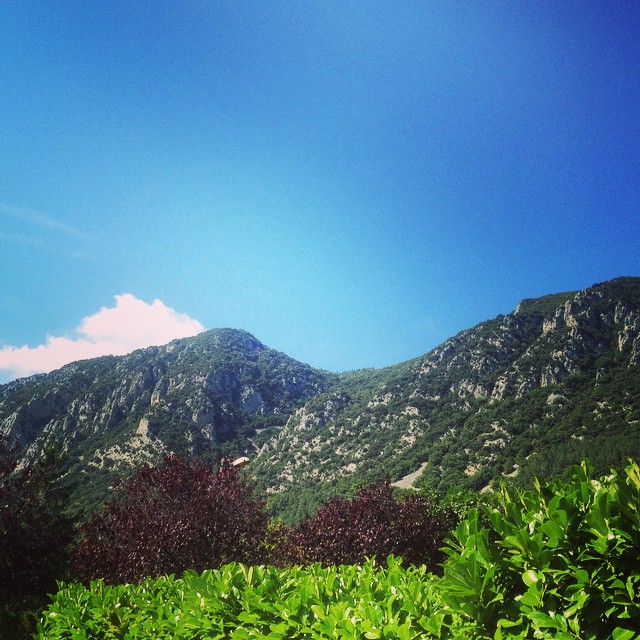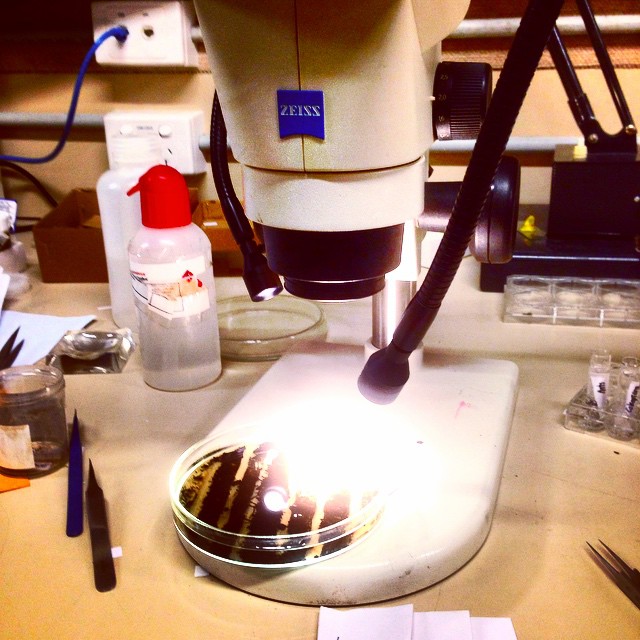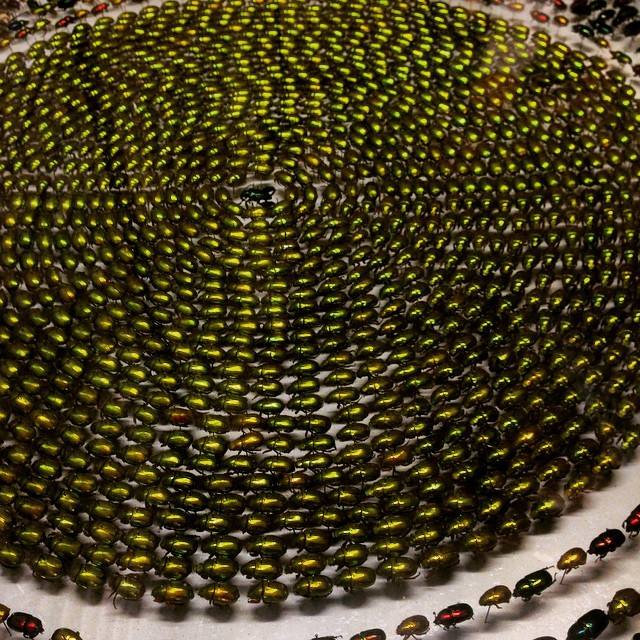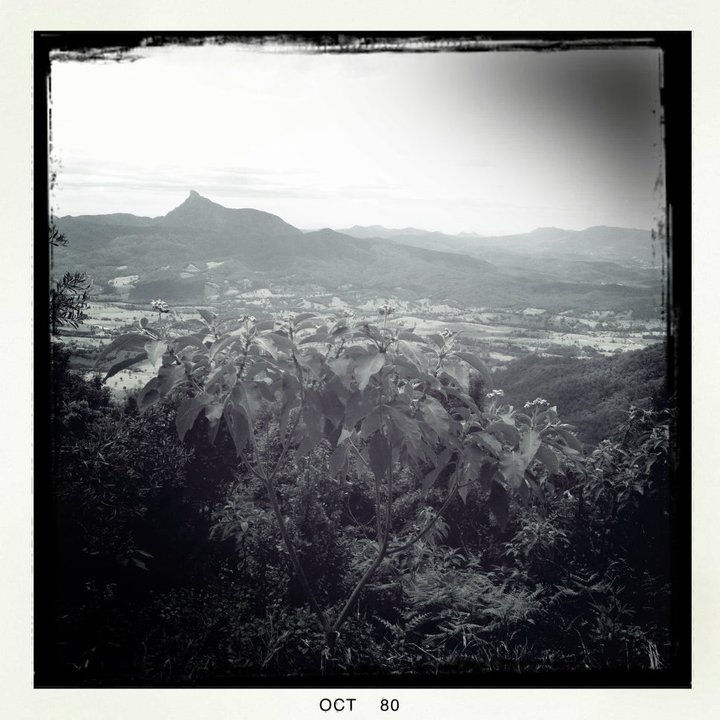Publications
Papers can be accessed on Google scholar
In preparation/review/revision
Boyle M. J. W., R. L. Kitching, C. J. Burwell, E. Leach, V. Amaral, M. Laidlaw and Ashton, L. A*. Insects have responded to 1° of climate warming in a subtropical rainforest.
Boyle, M. J. W., Thébaud, C., Dale, J., and Kitching. R.L., Ashton, L.A.* Functional diversity of moths is shaped by elevation.
H. M. Griffiths, A. L. Walker, Ashton, L. A*, S. Holdsworth, T. R. Bishop, M. P. Robertson, T. A. Evans, P. Eggleton. and C. L. Parr. Ants exert dominant ecological pressures on tropical forests.
Zeng, X., Boyle, M. J. W., Wang, R., Woon, J., Sharp, A., Parr, C. L., Eggleton, P., Griffiths H. & Bonebrake, T. C., Ashton, L. A.* The global resilience of invertebrate-mediated litter decomposition to disturbance.
2025
Sharp, A., Boyle M. J. W, Bonebrake, T.C, Guo, Y., Stork, N, Kitching, R.L., Zeng, X., Ashton, L.A. Elevated ENSO oscillations are reducing tropical forest invertebrate diversity. Nature, In Press.
Boyle M. J. W, Williamson, J., Rossiter, S., Drinkwater, R., Woon, J.S., Ashton, L.A., van Breugel, M., Eggleton, P., Evans, T.A., Lewis, O., Pfeifer, M., Sethi, S., Slade, E. M., Chung, A., Ewers, R.M. Intact forest canopies can protect tropical organisms from severe climate warming. iScience, In Press.
Boyle M. J. W. Bonebrake, T.C., Dias-Silva, K., Michel Dongmo, M., França, F. M., Gregory, N., Kitching, R.L., Ledger, M.J., Lewis, O.T., Sharp, A.C., Stork, N., Williamson, J., Ashton, L. A.* 2025. Causes and consequences of insect decline in tropical forests. Nature Reviews Biodiversity: 1, 315-331.
Kongnoo, P., Burwell, C.J., Blanchard, B.D., Punthuwat. L., Alcantara, M.J.M., Ashton, L. A., Kitching, R.L., Cao, M., and Nakamura, A. 2025. Elevational distribution of ants across seasons in a subtropical rainforest of eastern Australia. Forests, 16 (4), 664.
Thant, M., A. Nakamura, L. A. Ashton, S. Liu, X. Yang. 2025. Assessing the impacts of forest conversion and seasonal dynamics on soil nutrient heterogeneity associated with termite mounds. Forest Ecology and Management. 589: 122768.
C, Wenda, Luk, C. L., Benedick, S., Nakamura, A., Basset, Y., Bonebrake, T., Scheffers, B., Ashton, L. A., Xing, S. 2025. Butterflies respond to habitat disturbance in tropical forests through activity shifts. Journal of Animal Ecology: 94, 1361-1371.
Bonebrake, T. C., Tsang, T. P. N., Yu, N., Wang, Y., Ledger, M. J., Tilley, H. B., Yau, E. Y. H., Andersson, A.A., Boyle, M. J. W., Lee. K. W. K., Li, Q., Ling, Y. F., Dongmo, M .A. K., Güçlü, C., Dingle ,C., Ashton, L. A. 2025. Tropical cities as windows into the ecosystems of our present and future. Biotropica: e13369.
X. Chang, Y. Yang, Ashton, L. A., H. Pang, S. Xing. Understanding climate change response of plant–insect herbivore interactions from ecological traits. Biological Journal of the Linnean Society. 144: blae130.
2024
Boyle, M. J. W., Sharp, A. C., Barclay, M., Chung, A. Y. C., Ewers, R. M., De Roguemont, G., Bonebreak, T. C., Kitching, R. L., Stork, N., & Ashton, L. A. 2024. Are undescribed insect species declining faster than described species? A case study of tropical Staphylinid beetles. Current Biology: 34 (16), R770-R771.
Zeng, X., Gao, H., Wang, R., Machjer, B., Woon, J., Wenda, C., Eggleton, P., Griffiths H. & Ashton, L.A.* 2024. Global contribution of invertebrates to forest litter decomposition. Ecology Letters: 27, e14423.
Güclü, C., Chun, L. L., S. Abbas, Ashton, L. A. and Boyle, M. J. W.. Beta-Nestedness and Turnover Reveal Drivers of Community Assembly in a Regenerating sub-Tropical Forest. Global Ecology and Conservation. Ecology and Evolution. 14, e70233.
Güclü, C., Abbas, S., Yung, E., Ashton, L. A. 2024. Community Phylogenetic Structure & Phylogenetic Turnover Show Breaks between Regenerating Lowland and Montane Forests in Hong Kong. Perspective in Plant Ecology, Evolution and Systematics. 55: e03229.
R. L. Kitching, C. Wenda, J. Rocha, C. Thébaud, D. Strasberg, S. Xing & Ashton, L. A.* Niches, Neutrality and Contingency on a Tropical Oceanic Island: explaining Diversity and Turnover in Moth Assemblages in Island Rainforests. Biodiversity and Conservation: 33: 2265-2284.
Alcantara M.J.M., Fontanilla, A.M., Ashton, L. A., Burwell, Chris J., Cao, M., Han, H., Huang, H., Kitching, R.L., Reshchikov, A., Shen, X., Tang, Y., Wan, Y., Xu, Z., Nakamura, A. 2024. Bugs and Bergmann’s rule: a cross-taxon large-scale study reveals elevational and latitudinal body size variation of insect communities. Entomologia Generalis: 44: 715-725.
Barlow, B. E. L, Nakamura, A., Ashton, L. A.*. 2024. Predation, but not herbivory, declines with elevation in a tropical rainforest. Journal of Tropical Biology. 65: 627-638.
2023
Wenda, C., Nakamura, A., & Ashton, L. A.* 2023. Season and herbivore defence trait mediate tri-trophic interactions in tropical rainforest. Journal of Animal Ecology, 92, 446-476.
Wenda, C., Gaitán-Espitia, J.D., Solano-Iguaran, J.J., Nakamura, A., Majcher, B.M. & Ashton, L.A.* (2023) Heat tolerance variation reveals vulnerability of tropical herbivore–parasitoid interactions to climate change. Ecology Letters, 26, 278 290– 13.
Boyle, M. J. W. Wet-bulb temperatures reveal inequitable heat risk following climate change in Hong Kong. 2023. Environmental Research Letters 18.9: 094072.
Xing, S., Leahy, L., Ashton, L. A., Kitching, R. L., Bonebrake, T. C., & Scheffers, B. R. 2023. Ecological patterns and processes in the vertical dimension of terrestrial ecosystems. Journal of Animal Ecology, 92, 538– 551.
Ochoa-Hueso, R., Delgado-Baquerizo, M., Risch, A.C., Ashton, L. A., et al. 2023. Bioavailability of macro and micronutrients across global topsoils: Main drivers and global change impacts. Global Biogeochemical Cycles: e2022GB007680.
Kitching, R. L., Maunsell, S. C., Odell, E. H., Orr, A. G., Nakamura, A., & Ashton, L. A. (2023). Arthropods of Australia’s subtropical and tropical rainforests: rich and unique hotspots of biological diversity?. Journal of Insect Conservation, 1-16.
2022
Panthee, S.; Ashton, L.A.; Tani, A.; Sharma, B.; Nakamura, A. Mechanical Branch Wounding Alters the BVOC Emission Patterns of Ficus Plants. Forests 2022, 13, 1931.
Donkersley, P., Ashton, L.A., Lamarre, G. P. A., & Segar, S. (2022). Global insect decline is the result of wilful political failure: A battle plan for entomology. Ecology and Evolution, 12, e9417.
Zanne, A. E., Flores-Moreno, H., Powell, J. R., Cornwell, W. K.,… Ashton, L. A… Zalamea P. 2022. Termite sensitivity to temperature affects global wood decay rates. Science, 377, 1440-1444.
Nakamura, A., Scheffers, B., Kitching, R. L., & Ashton, L. A. (Eds.). 2022. Understanding patterns and mechanisms of forest canopy diversity and ecosystem functions in a changing world. Frontiers in Forests and Global Change
Guo Z, Yan Z, Majcher B.M, Lee C.K, Zhao Y, Song G, Wang B, Wang X, Deng Y, Michaletz S.T, Ryu Y. 2022 Dynamic biotic controls of leaf thermoregulation across the diel timescale. Agricultural and Forest Meteorology. 15;315:108827.
2021
H. M. Griffiths*, Ashton, L. A*., Catherine L Parr, Paul Eggleton. 2021. The impact of invertebrate decomposers on plants and soil New Phytologist 231: 2142-2149 *corresponding and co-first author.
H. M. Griffiths, Paul Eggleton, Nicole Hemming‐Schroeder, Tom Swinfield, Joel S Woon, Steven D Allison, David A Coomes, Ashton, L. A., Catherine L Parr. 2021. Carbon flux and forest dynamics: Increased deadwood decomposition in tropical rainforest tree‐fall canopy gaps Global Change Biology 27: 1601-1613.
Wenda, C., Ashton, L. A. Ecology: What Affects the Distribution of Global Bee Diversity Current Biology 31: R127-R128.
2020
Tom R Bishop, Hannah M Griffiths, Ashton, L. A., Paul Eggleton, Joel S Woon, Catherine L Parr. 2020. Clarifying terrestrial recycling pathways. Trends in ecology & evolution 36: 9-11.
Boyle M.J.W., Tom R Bishop, Sarah H Luke, Michiel van Breugel, Theodore A Evans, Marion Pfeifer, Tom M Fayle, Stephen R Hardwick, R Isolde Lane‐Shaw, Kalsum M Yusah, Imogen CR Ashford, Oliver S Ashford, Emma Garnett, Edgar C Turner, Clare L Wilkinson, Arthur YC Chung, Robert M Ewers. 2020. Localised climate change defines ant communities in human‐modified tropical landscapes. Functional Ecology 00: 1– 15.
Goldman, A.E., Timothy C Bonebrake, Toby PN Tsang, Theodore A Evans, Luke Gibson, Paul Eggleton, Hannah M Griffiths, Catherine L Parr, Ashton, L. A. 2020. Drought and presence of ants can influence hemiptera in tropical leaf litter Biotropica 52: 221-229.
Kitching, R.L., Ashton, L. A., Orr, A., Odell. 2020. The Pyraloidea of Eungella: a moth faun in its elevational and distributional context. Proceedings of the Royal Society of Queensland 125: 65-79.
Kitching, R.L. Ashton, L. A., Leach, E.C., Odell, E.H., McDonald, W.J.F., Arvidsson, D and Kitching. 2020. The Eungella Biodiversity Study: Filling the knowledge gap. Proceedings of the royal society of Queensland 125: 11-21.
Stephanie J Law, Tom R Bishop, Paul Eggleton, Hannah Griffiths, Ashton, L. A., Catherine Parr. 2020. Darker ants dominate the canopy: Testing macroecological hypotheses for patterns in colour along a microclimatic gradient. Journal of Animal Ecology 89: 374-359.
2019
Ashton, L. A. 2019. Rainforests Are in Peril, and So Are We| Rainforest: Dispatches from Earth's Most Vital Frontlines by Tony Juniper, Profile Books, 2018.£ 16.99, hbk (448 pp.) Trends in Ecology & Evolution 34 (12), 1063-1064.
Timothy C Bonebrake, Fengyi Guo, Caroline Dingle, David M Baker, Roger L Kitching, Ashton, L. A. 2019. Conservation Success through IPBES-Guided Transformative Change. Trends in Ecology and Evolution 34: 970-971.
E. J. Dale, R. L. Kitching, C. Thebaud, S. C. Maunsell, Ashton, L. A. 2019. Moths in the Pyrénées: spatio-temporal patterns and indicators of elevational assemblages. Biodiversity and Conservation 28: 1593–1610.
H. M. Griffiths^, Ashton, L. A.*^, T. A. Evans, C. L. Parr, P. Eggleton. 2019. Termites can decompose more than half of deadwood in tropical rainforest. Current Biology 29: 118-119. ^co-first author, *corresponding author
Ashton, L. A., H. M. Griffiths*, C. L. Parr, T. A. Evans, R. K. Didham, F. Hasan, Y. A. Teh, H. S. Tin, C. S Vairappan, P. Eggleton. 2019. Termites mitigate the effects of drought in tropical rainforest. Science 363: 174-177.
Law S., P. Eggleton, H. M. Griffiths, Ashton, L. A. and C. L. Parr. 2019. Suspended Dead Wood Decomposes Slowly in the Tropics, with Microbial Decay Greater than Termite Decay. Ecosystems 22: 1176 - 1188.
2018
Xing S., B. C. Bonebrake, Ashton, L. A., R. L. Kitching, M. Cao, Z. Sun, J. C. Ho, A. Nakamura. 2018. Colors of night: climate–morphology relationships of geometrid moths along spatial gradients in southwestern China. Oecologia 188: 537-546.
Griffiths, H. M.*, Ashton, L. A.*, A. E. Walker, F. Hasan, T. Evans, P. Eggleton and C. L. Parr. 2018. Ants are the major agents of nutrient redistribution from tropical rainforests. The Journal of Animal Ecology 87: 293-300. *co-first author.
2017
Nakamura, A., R. L. Kitching, M. Cao, T. J. Creedy, T. M. Fayle, M. Freiberg, C. N. Hewitt, T. Itioka, L. P. Koh, K. Ma, Y. Malhi, A. Mitchell, V. Novotny, C. M. P. Ozanne, L. Song, H. Wang, and Ashton L. A.. 2017. Forest canopy science: achievements and horizons. Trends in Ecology and Evolution 32: 438-451.
Beck, J., McCain, C. M., Axmacher, J. C., Ashton, L. A., Bärtschi, F., Brehm, G., Choi, S., Cizek, O., Cowell. R. K., Fiedler, K., Francois, C. L., Highland, S,, Holloway, J. D., Intachat, J., Kadlec, T., Kitching, R. L., Maunsell, S. C., Merckx, T., Nakamura, A., Odell, E., Sang, W., Toko, P. S., Zamecnik, J., Zou, Y. & Novotny, V. 2017. Elevational species richness gradients in a hyperdiverse insect taxon: a global meta-study on geometrid moths. Global Ecology and Biogeography 26: 412-424.
2016
Colwell, R. K., N. J. Gotelli, Ashton L. A., J. Beck, G. Brehm, T. M. Fayle, K. Fiedler, M. L. Forister, M. Kessler, R. L. Kitching, P. Klimes, J. Kluge, J. T. Longino, S. C. Maunsell, C. M. McCain, J. Moses, S. Noben, K. Sam, L. Sam, A. M. Shapiro, X. Wang, and V. Novotny. 2016. Midpoint attractors and species richness: Modelling the interaction between environmental drivers and geometric constraints. Ecology Letters 19: 1009-1022.
Ashton, L. A., A. Nakamura, C. J. Burwell, Y. Tang, M. Cao, T. Whitaker, Z. Sun, H. Huang & R. L. Kitching. 2016. Elevational sensitivity in an Asian ‘hotspot’: moth diversity across elevational gradients in tropical, sub-tropical and sub-alpine China. Scientific Reports 6: 26513.
Leach, E., C. J. Burwell, Ashton, L. A. D. Jones and R. L. Kitching. 2016. Comparison of point counts and automated acoustic monitoring: detecting birds in a rainforest biodiversity survey. Emu 116: 305-309.
Ashton, L. A., A. Nakamura, Y. Basset, C. J. Burwell, M. Cao, R. Eastwood, E. Odell, E. G. d. Oliveira, K. Hurley, M. Katabuchi, S. Maunsell, J. McBroom, J. Schmidl, Z. H. Sun, Y. Tang, T. Whitaker, M. J. Laidlaw, W. J. F. McDonald, and R. L. Kitching. 2016. Vertical stratification of moth across elevation and latitude. Journal of Biogeography 43: 59-69.
2015
Ashton, L. A., E. H. Odell, C. J. Burwell, S. C. Maunsell, A. Nakamura, W. J. F. McDonald, and R. L. Kitching. 2015. Altitudinal patterns of moth diversity in tropical and subtropical rainforest. Austral Ecology 42: 197-208.
Odell, E. H., Ashton, L. A., and R. L. Kitching. 2015. Elevation and moths in acentral eastern Queensland rainforest. Austral Ecology 42: 133-144.
Nakamura, A., C. J. Burwell, Ashton, L. A., M. J. Laidlaw, M. Katabuchi, and R. L. Kitching. 2015. Identifying indicator species of elevation: Comparing the utility of woody plants, ants and moths for long-term monitoring. Austral Ecology 42: 177-188.
2014
Ashton, L. A., H. S. Barlow, A. Nakamura, and R. L. Kitching. 2014. Diversity in tropical ecosystems: the species richness and turnover of moths in Malaysian rainforests. Insect Conservation and Diversity 8: 132-142.
2013
Kitching, R. L., and Ashton L. A. 2013. Predictor sets and biodiversity assessments: the evolution and application of an idea. Pacific Conservation Biology 19: 418-426.
Y. Ji*, Ashton, L.A.,*, S. M. Pedley*, D. P. Edwards*, Y. Tang, A. Nakamura, R. Kitching, P. M. Dolman, P. Woodcock, F. A. Edwards, T. H. Larsen, W. W. Hsu, S. Benedick, K. C. Hamer, D. S. Wilcove, C. Bruce, X. Wang, T. Levi, M. Lott, B. C. Emerson, and D. W. Yu*. 2013. Reliable, verifiable and efficient monitoring of biodiversity via metabarcoding. Ecology Letters 16: 1245-1257. *These authors contributed equally to this study
Kitching, R. L., Ashton L. A., C. J. Burwell, S. L. Boulter, P. Greenslade, M. J. Laidlaw, C. L. Lambkin, S. C. Maunsell, A. Nakamura, and F. Ødegaard. 2013a. Sensitivity and threat in high elevation rainforests: outcomes and consequences of the IBISCA-Queensland Project. Treetops at Risk. pp 131-139. Springer-Verlag, Berlin.
Kitching, R. L., Ashton L. A., A. Nakamura, T. Whitaker, and C. V. Khen. 2013b. Distance-driven species turnover in Bornean rainforests: homogeneity and heterogeneity in primary and post-logging forests. Ecography 36: 675-682.
2011
Ashton, L. A., R. L. Kitching, S. Maunsell, D. Bito, and D. Putland. 2011. Macrolepidopteran assemblages along an altitudinal gradient in subtropical rainforest - exploring indicators of climate change. Memoirs of the Queensland Museum 55: 375-389.
Kitching, R. L., D. Putland, Ashton, L. A., M. J. Laidlaw, S. L. Boulter, H. Christensen, and C. L. Lambkin. 2011. Detecting biodiversity changes along climatic gradients: the IBISCA Queensland Project. Memoirs of the Queensland Museum 55: 235-250.
*Corresponding author















